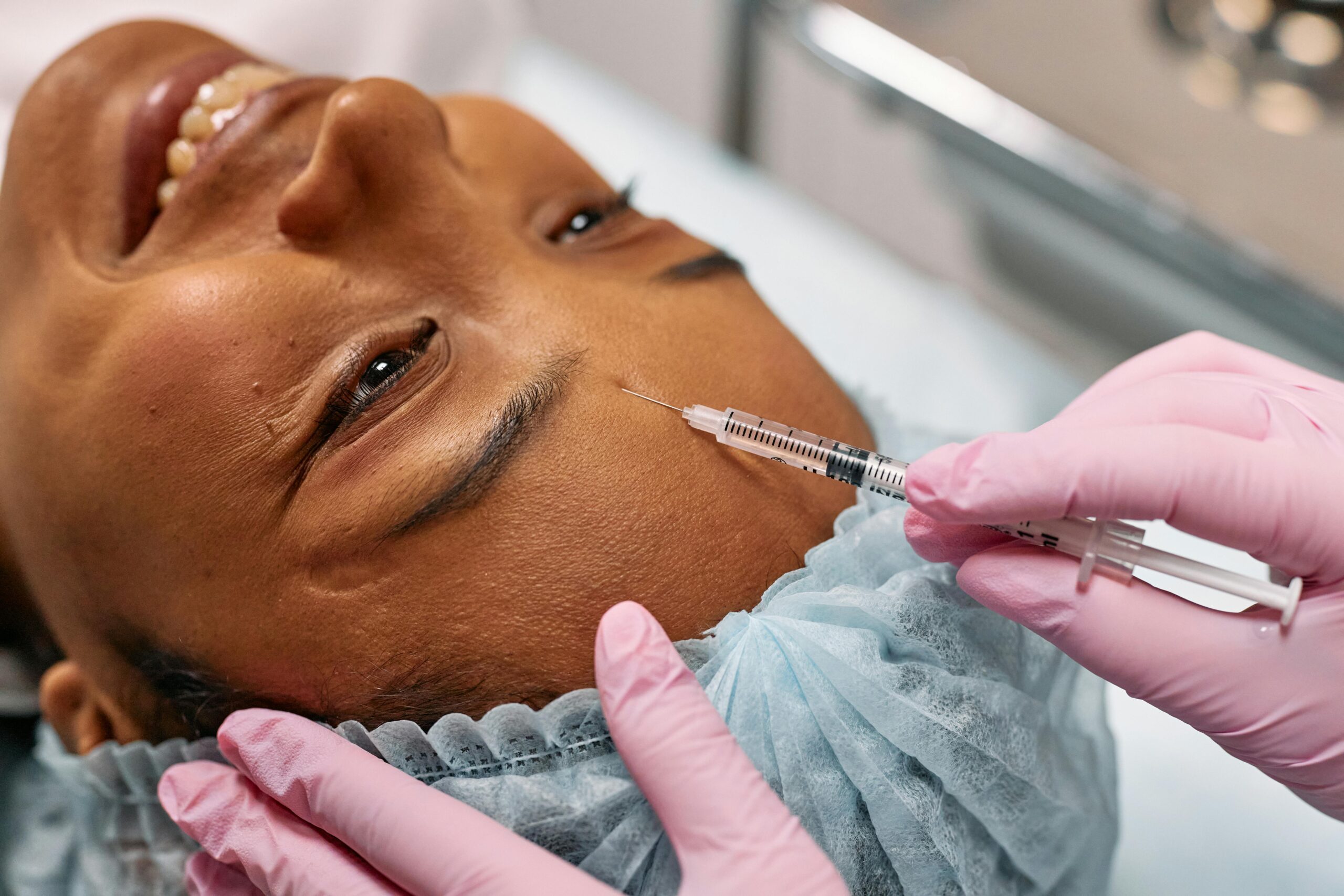Facial injections have emerged as a popular option for those seeking subtle enhancements without the need for surgery. From dermal fillers to Botox, these treatments offer a way to maintain a youthful appearance by addressing common concerns such as fine lines, wrinkles, and volume loss. However, trying to understand what facial injections involve, and how to choose the right option for your needs can be tricky. With so many choices available, it can be overwhelming to navigate the world of cosmetic enhancements.
Understanding Facial Injections
There are two broad categories of facial injections: dermal fillers and Botox. While people use both to improve the appearance of the face, they work in entirely different ways.
“Dermal fillers add volume to areas of the face, typically using substances like hyaluronic acid.,” explained double board certified facial plastic surgeon Dr. Sam Rizk. “They can enhance contours, plump lips, and smooth deep lines.”
Essentially, consumers use fillers to restore lost volume and create a fuller, more youthful look. On the other hand, Botox is a neuromodulator that temporarily relaxes muscles to reduce the appearance of wrinkles. According to Rizk, it particularly targets dynamic wrinkles caused by facial expressions, like frown lines and crow’s feet. The key distinction here is that while fillers add volume, Botox works by relaxing the muscles that cause wrinkles, without altering the volume of the face.
“The key with both treatments is moderation and expert application—using them to subtly enhance your natural features without overdoing it,” Rizk shared.
Fillers vs. Botox
When it comes to dermal fillers, there are several different types available, each with its own unique properties and target areas.
“Hyaluronic acid fillers are perhaps the most popular and versatile,” Rizk said. “They’re used to add volume and hydration, making them great for areas like the cheeks, lips, and under the eyes.”
These fillers, such as Juvederm and Restylane, are commonly used to plump and rejuvenate various facial areas. Another type, calcium hydroxylapatite fillers, known for their thicker consistency, are ideal for “deeper wrinkles and more significant volume loss,” with Radiesse being a well-known brand in this category, often used in the cheeks and jawline.
Dr. Rizk also highlighted poly-L-lactic acid fillers like Sculptra, which work by stimulating collagen production over time. It is proven to improve facial volume and reduce deep lines. Autologous fat injections, which involve using your own fat to restore volume and contour, are another option often used for larger areas like the cheeks.
“Facial injections can be incredibly effective for addressing common skin concerns such as fine lines, wrinkles, and loss of volume,” said Rizk.
Botox is particularly useful for treating dynamic wrinkles caused by repetitive facial expressions. Fillers work to restore volume and smooth out deeper lines. For example, hyaluronic acid fillers can “rejuvenate the face by restoring contours and enhancing hydration.”
It is important to note that while fillers and Botox can offer significant improvements, they do have their limitations. For those with more extensive aging concerns or excess skin, surgical options like a facelift may be needed for more comprehensive results.
“It’s all about finding the right balance and approach for your unique needs,” he added.
Tailored Treatments for Women of Color
For women of color, facial fillers offer additional benefits tailored to specific aesthetic concerns. Volume restoration is a key advantage, as fillers can enhance facial contours and restore lost volume in areas like the cheeks and under the eyes. Dark circles and under-eye hollows can be more pronounced in some skin tones. Those can also be effectively treated with fillers.
“Fillers can reduce the appearance of dark circles and achieve a fresher, more rested look,” explained Rizk.
Another important consideration for women of color is the ability of fillers to improve the appearance of scars. That includes acne scars, by smoothing out the skin’s texture and filling in depressions. However, achieving natural outcomes requires expertise. Dr. Rizk stressed the importance of working with a provider who understands the nuances of different skin tones. This can make all the difference in choosing treatments that enhance natural beauty while complementing individual skin characteristics.
When considering facial injections, safety and effectiveness should be top priorities.
“Experience really matters,” he said. “Don’t forget to ask about their ongoing training, published studies, and CME (Continuing Medical Education) credits to ensure they’re up-to-date with the latest techniques.”
Facial fillers can last anywhere from 6 to 18 months, depending on the type and where they’re used. Collagen-boosting fillers like Sculptra, however, can sometimes last up to two years.
“Many people go for touch-ups every 6 to 12 months to keep their look fresh,” noted Rizk.
Ultimately, facial injections can be a game-changer in maintaining a youthful and fresh appearance. Whether it’s smoothing out fine lines or restoring lost volume, facial injections offer a range of possibilities. They can help you achieve your beauty goals while enhancing your natural features.
